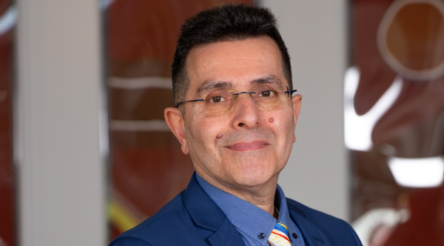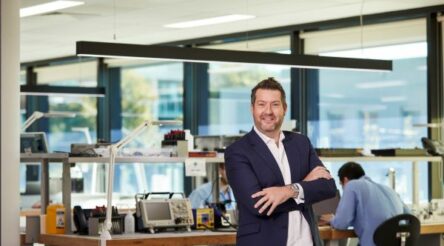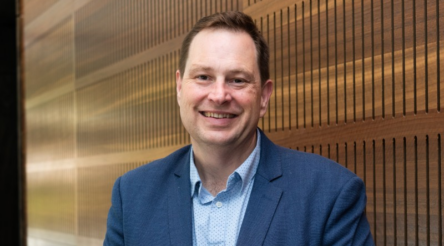Innovate to decarbonise agriculture – by David Heard

Green hydrogen company Hiringa Energy and agricultural and pastoral enterprise Sundown Pastoral Co are creating a world’s first Good Earth Cotton farm which will produce its own renewable ammonia and green hydrogen to decarbonise its operations. Here David Heard explains the implications for agriculture and wider industry.
As Australia inches closer to our legislative target to reach net zero emissions by 2050, there is increasing pressure to advance decarbonisation in hard-to-abate sectors, including agriculture. Despite the challenges of transitioning agriculture’s trade-exposed activities to a low-carbon environment, our domestic cotton industry is pioneering the way forward.
Displacing high-carbon fuels and fertilisers with low-carbon alternatives is one of the most effective ways for agricultural businesses to reduce their carbon footprint. It’s a major reason we partnered with Sundown Pastoral Co for the Good Earth Green Hydrogen and Ammonia (GEGHA) project, where our commercial pilot will deliver low-carbon hydrogen and ammonia for consumption in the production of climate-positive and traceable cotton at one of Australia’s most progressive agribusinesses.
To accelerate the project, and the future of climate-positive agriculture, we were awarded $35.8 million in funding as part of the NSW Hydrogen Hubs Initiative — a significant milestone in validating GEGHA’s position as a leading project in Australia’s emerging low-carbon hydrogen industry.
How does it work?
The GEGHA project involves the construction and operation of a low-carbon hydrogen and ammonia production facility near Moree, in Northern NSW. The project will deliver ~3,800t p.a. of anhydrous ammonia as a direct-application fertiliser to displace ~6,800t p.a. equivalent of imported high-carbon urea. Hydrogen will substitute on-farm diesel and LPG use in irrigation pumping, mobile farm equipment, and the drying of raw cotton for processing. Energy comes from a 27 MW solar farm on the site.
The project is forecast to reduce direct carbon emissions by 17,000 tonnes per year.
How can it be applied to the wider industry?
The concept is scalable and repeatable, with feasibility underway for 20,000t p.a. ammonia projects able to serve demand more broadly in agricultural ‘valleys’ at costs competitive with traditional high-carbon fertiliser and fuel supplies.
This version of decarbonising and regionalising ammonia production presents a realistic near-term opportunity to displace Australia’s established fossil fuel-based and import-dependent nitrogenous fertiliser market.
Adopting this model would allow farmers across the country to produce their own fuels and fertilisers, or to access locally produced supply, increasing reliability while drastically reducing carbon emissions for an industry that has historically been questioned about its carbon footprint and plans for change.
What does it mean for agricultural producers?
GEGHA delivers a precedent for how Australia’s various agricultural producers can value-add based on regional renewable energy resources in response to shifting domestic and global consumer sentiment for lower carbon-embedded products.
Now is the time for our agricultural sector to be proactive in its decarbonisation strategy. There is increasing pressure from consumers, as well as a raft of new laws, demanding more sustainable food and fibre. For example, from 2025 every garment sold in the European Union must be traceable with a carbon score on its label.
These requirements will make low-carbon cotton far more attractive to textile companies, and much more lucrative for farmers who can meet them. Australia’s agricultural producers have an opportunity to lead the way forward in securing access to carbon-conscious, premium markets.
How is this helping to grow Australia’s green hydrogen manufacturing capabilities?
Australia has the potential to be a ‘Hydrogen Superpower’, with the industry forecast to generate $50 billion in additional GDP, and create more than 26,000 direct and indirect jobs by 2050.
However, before this export opportunity can be realised, industry foundations must be laid to build trust, acceptance and establish a range of efficient end-uses. The GEGHA model demonstrates an immediate, tangible pathway to deliver comprehensive economic, environmental and social outcomes by applying low-carbon hydrogen to decarbonise domestic hard-to-abate sectors.
Right now, we’re focused on using hydrogen as a value-adding tool to make farming more sustainable — and showing future importers how Australia’s low-carbon hydrogen can do the same in other economies.
Further reading:
Cotton to decarbonise by making its own green fuel and fertiliser
David Heard is the Executive Director, Australia of NZ-based hydrogen pioneer, Hiringa Energy. David is leading Hiringa’s push into the Australian hydrogen industry.
Picture: David Heard
@aumanufacturing Sections
Analysis and Commentary Awards Defence Manufacturing News Podcast Technology Videos










